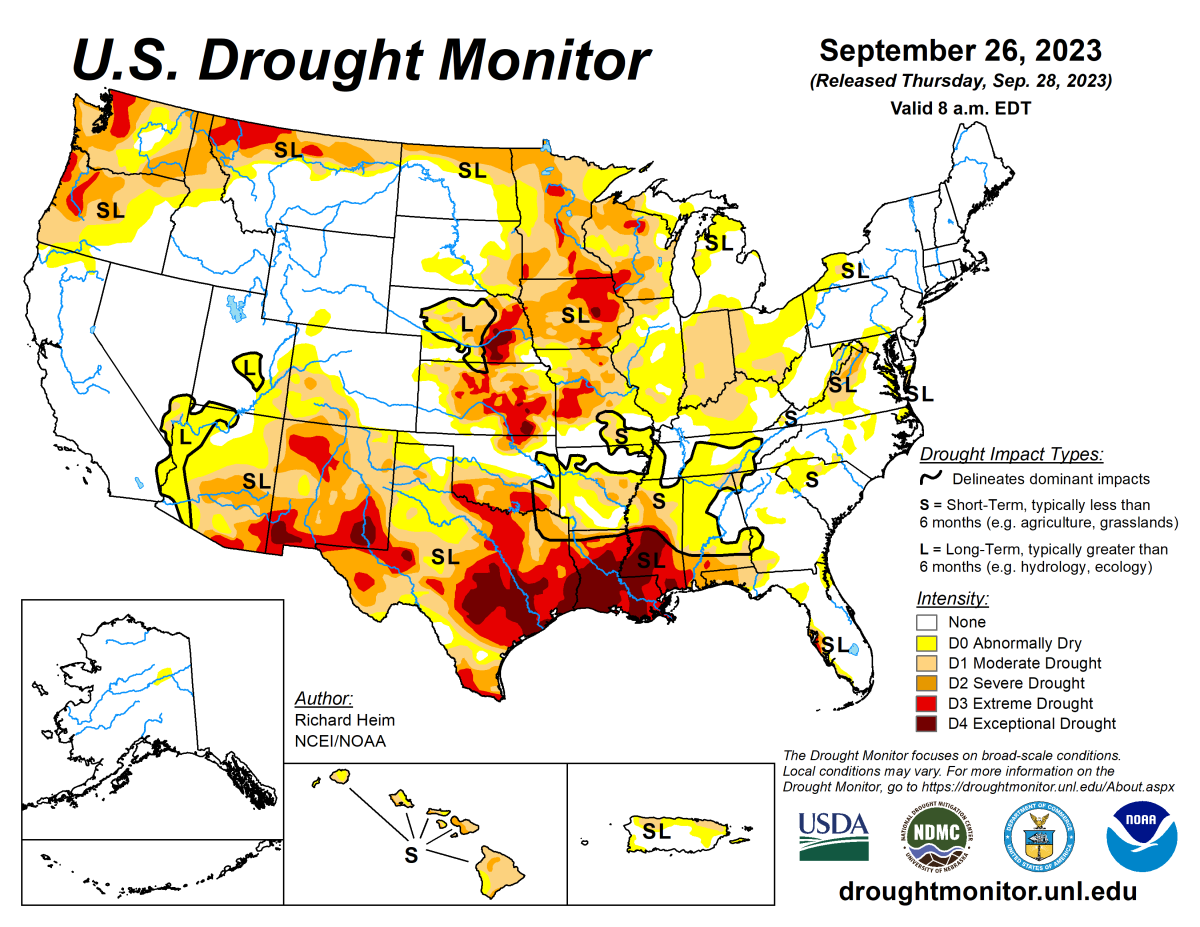
According to the September 26, 2023 U.S. Drought Monitor, moderate to exceptional drought covers 32.1% of the United States including Puerto Rico, an increase from last week’s 31.7%. The worst drought categories (extreme to exceptional drought) decreased from 9.4% last week to 8.5%.
The upper-level circulation over the contiguous U.S. (CONUS) during this U.S. Drought Monitor (USDM) week (September 20-26) consisted of an upper-level ridge of high pressure that extended from the southern Plains to Hudson Bay, as well as a low-pressure trough over the eastern Pacific. The trough sent weather systems spinning across the CONUS, with their fronts and surface low pressure systems generating areas of rain across the Pacific Northwest, northern Rockies, and Great Plains to the Mississippi Valley. Meanwhile, Tropical Storm Ophelia moved up the East Coast, spreading rain from North Carolina to southern New England. These areas were wetter than normal for the week. Some of the rain was locally heavy, with over five inches reported in places. Much of the rain fell over severely dry areas, which resulted in contraction or reduction in the intensity of drought in parts of the Great Plains, Upper Mississippi Valley, and Mid-Atlantic states.
It was drier than normal across the rest of the West, large parts of the central to southern Plains, and most of the country between the Mississippi Valley and Appalachians. The continued dry conditions from the Ohio Valley to the central Gulf of Mexico Coast resulted in expansion or intensification of drought and abnormal dryness in these areas. Temperatures averaged warmer than normal beneath the ridge across the Plains, Mississippi Valley, and Great Lakes. The week was cooler than normal in the West and across the East Coast states.
Nationally, expansion exceeded contraction, so the nationwide moderate to exceptional drought area increased this week. More of the country fell into drought this week—the rains that did occur fell mostly over areas that have been in extremely dry conditions for an extended period of time. So, while the moderate to exceptional drought area increased, the extreme to exceptional drought area decreased.
Abnormal dryness and drought are currently affecting over 137 million people across the United States including Puerto Rico—about 44.3% of the population.

The full U.S. Drought Monitor weekly update is available from Drought.gov.
In addition to Drought.gov, you can find further information on the current drought on this week’s Drought Monitor update at the National Drought Mitigation Center.
The most recent U.S. Drought Outlook is available from NOAA’s Climate Prediction Center. The U.S. Department of Agriculture’s World Agriculture Outlook Board also provides information about the drought’s influence on crops and livestock.
For additional drought information, follow #DroughtMonitor on Facebook and Twitter.



